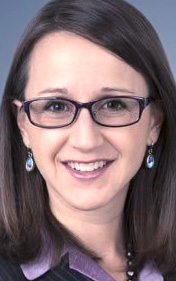

 This week, I had the privilege of presenting at NamesCon on behalf of the Domain Name Association (DNA) -- in my position as Chair of the Board -- to provide an update on our activities and an assessment of our progress as an industry in light of the goals of the DNA. In summary, there is still a long way to go with many challenges to address. Despite this, there is much to be excited about and incredible opportunity for our combined success. Included here is a transcript of my speech. I welcome feedback and comments.
This week, I had the privilege of presenting at NamesCon on behalf of the Domain Name Association (DNA) -- in my position as Chair of the Board -- to provide an update on our activities and an assessment of our progress as an industry in light of the goals of the DNA. In summary, there is still a long way to go with many challenges to address. Despite this, there is much to be excited about and incredible opportunity for our combined success. Included here is a transcript of my speech. I welcome feedback and comments.
 The crème de la crème, the good, the bad, even the ugly of the Domain Name Industry are attending NamesCon in Vegas this week. 2016 will be a very challenging, absolutely critical year for those attendees and their corporate employers as the Domain Name System (DNS) faces a massive shakeup. In 2015, 287 global brands, worth $trillions headed by Google, Amazon, had their new TLD Registries delegated into the root zone of the Internet.
The crème de la crème, the good, the bad, even the ugly of the Domain Name Industry are attending NamesCon in Vegas this week. 2016 will be a very challenging, absolutely critical year for those attendees and their corporate employers as the Domain Name System (DNS) faces a massive shakeup. In 2015, 287 global brands, worth $trillions headed by Google, Amazon, had their new TLD Registries delegated into the root zone of the Internet.
 Since the launch of the New gTLD Program in 2012, it has become evident that new gTLD registries overestimated the demand for new Top-Level Domain name extensions. Furthermore, new gTLD registries did not anticipate the hurdles in raising awareness, not to mention creating adoption for new domains. Even the most pessimistic New gTLD Program critic did not expect such uninspiring results. It was a wake up call for many in the domain industry. The New gTLD Program currently lacks credibility. No new gTLD has yet to go mainstream and capture the world's imagination.
Since the launch of the New gTLD Program in 2012, it has become evident that new gTLD registries overestimated the demand for new Top-Level Domain name extensions. Furthermore, new gTLD registries did not anticipate the hurdles in raising awareness, not to mention creating adoption for new domains. Even the most pessimistic New gTLD Program critic did not expect such uninspiring results. It was a wake up call for many in the domain industry. The New gTLD Program currently lacks credibility. No new gTLD has yet to go mainstream and capture the world's imagination.
 Domain name registration is a hot industry. Registrars represent a growing multi-billion dollar industry with the keys to the Internet for any organization hoping to have a web presence. Further, because of their role as one of the gatekeepers to the Internet, registrars have the unique ability and are often asked to take action against illegal activity online. This fact was highlighted in the report released this week by the Office of the U.S. Trade Representative, the 2015 Out-of-Cycle Notorious Markets List.
Domain name registration is a hot industry. Registrars represent a growing multi-billion dollar industry with the keys to the Internet for any organization hoping to have a web presence. Further, because of their role as one of the gatekeepers to the Internet, registrars have the unique ability and are often asked to take action against illegal activity online. This fact was highlighted in the report released this week by the Office of the U.S. Trade Representative, the 2015 Out-of-Cycle Notorious Markets List.
 If you would like to help guide the future of the Public Interest Registry (PIR), the non-profit operator of the .ORG, .NGO and .ONG domains, the deadline for nominations is MONDAY, NOVEMBER 30, 2015! After reading the information about the PIR Board requirements, you are welcome to nominate either yourself or anyone else using the PIR Nomination Form. Nominations close at 23:00 UTC on November 30, 2015, so don't delay!
If you would like to help guide the future of the Public Interest Registry (PIR), the non-profit operator of the .ORG, .NGO and .ONG domains, the deadline for nominations is MONDAY, NOVEMBER 30, 2015! After reading the information about the PIR Board requirements, you are welcome to nominate either yourself or anyone else using the PIR Nomination Form. Nominations close at 23:00 UTC on November 30, 2015, so don't delay!
 Would you be interested in helping guide the future of the Public Interest Registry (PIR), the non-profit operator of the .ORG, .NGO and .ONG domains? If so, the Internet Society is seeking nominations for three positions on the PIR Board of Directors. The nominations deadline is Monday, November 30, 2015. Find out more information about the positions and the required qualifications.
Would you be interested in helping guide the future of the Public Interest Registry (PIR), the non-profit operator of the .ORG, .NGO and .ONG domains? If so, the Internet Society is seeking nominations for three positions on the PIR Board of Directors. The nominations deadline is Monday, November 30, 2015. Find out more information about the positions and the required qualifications.
 One of the consistent themes of this blog series is that despite similarities across .brand TLDs, no two brands will settle on the exact same strategy and process for moving their TLD to launch. As I discussed last week, an implementation plan ensures that each required action is documented, responsibility for it is assigned and a more detailed project plan can be developed to take this process further.
One of the consistent themes of this blog series is that despite similarities across .brand TLDs, no two brands will settle on the exact same strategy and process for moving their TLD to launch. As I discussed last week, an implementation plan ensures that each required action is documented, responsibility for it is assigned and a more detailed project plan can be developed to take this process further.
 Readers of my posts will have noticed that we've been working over the last two months to launch the TLD Operator Webinar which was held recently. Its purpose was to unite all new TLD applicants and collectively share our experiences in order to build momentum in the industry and support each other in our pursuits. With more than 300 registrations and 40 percent of all new TLDs attending, we were humbled and overjoyed with the success -- validating our 'educated guess' that there was a global appetite for information to assist new TLD applicants.
Readers of my posts will have noticed that we've been working over the last two months to launch the TLD Operator Webinar which was held recently. Its purpose was to unite all new TLD applicants and collectively share our experiences in order to build momentum in the industry and support each other in our pursuits. With more than 300 registrations and 40 percent of all new TLDs attending, we were humbled and overjoyed with the success -- validating our 'educated guess' that there was a global appetite for information to assist new TLD applicants.
 In pursuit of continued domain name industry success, the Domain Name Association (DNA) is delighted to announce the launch of the next industry resource -- the DNA University. The aim of the DNA University is to establish a dedicated education platform to facilitate the exchange of ideas, best-practice methodologies and continued development of the industry's combined expertise. To this end, the DNA University will offer stakeholders an opportunity to share their experiences, learn from each other and provide a forum to incubate concepts that will advance the domain name industry.
In pursuit of continued domain name industry success, the Domain Name Association (DNA) is delighted to announce the launch of the next industry resource -- the DNA University. The aim of the DNA University is to establish a dedicated education platform to facilitate the exchange of ideas, best-practice methodologies and continued development of the industry's combined expertise. To this end, the DNA University will offer stakeholders an opportunity to share their experiences, learn from each other and provide a forum to incubate concepts that will advance the domain name industry.
 There has been a lot of criticism about the worthiness of DNSSEC. Low adoption rates and resistance and reluctance by Registrars to take on the perceived burden of signing domains and passing-on cryptographic material are at the crux of the criticism. I'm a believer in DNSSEC as a unique and worthwhile security protocol and as a new platform for innovation. It's the reason I've long advocated for and continue to work toward a new model of DNSSEC provisioning.
There has been a lot of criticism about the worthiness of DNSSEC. Low adoption rates and resistance and reluctance by Registrars to take on the perceived burden of signing domains and passing-on cryptographic material are at the crux of the criticism. I'm a believer in DNSSEC as a unique and worthwhile security protocol and as a new platform for innovation. It's the reason I've long advocated for and continue to work toward a new model of DNSSEC provisioning.